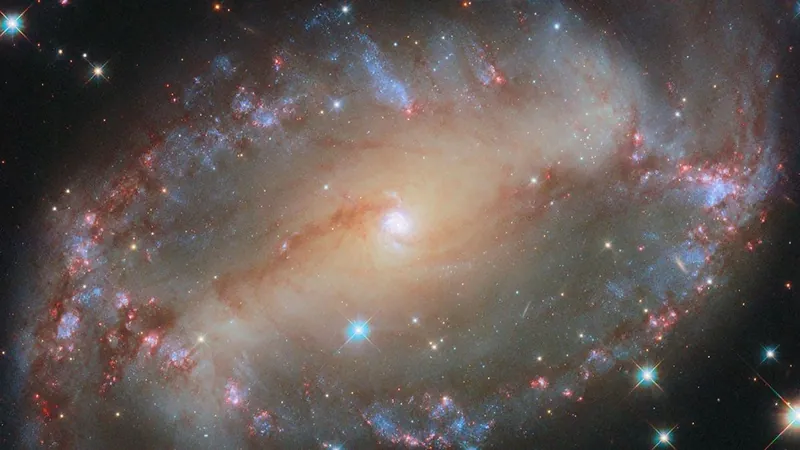
NASA's Hubble Telescope Discovers Cosmic Eye Staring Back From 76 Million Light-Years Away!
2025-01-02
Author: Wei
NASA's Hubble Telescope Makes an Astonishing Discovery
In an astonishing discovery that has captured the attention of astronomers and space enthusiasts alike, NASA's iconic Hubble Space Telescope has spotted what appears to be a giant eye in the cosmos. This spiral galaxy, dubbed NGC 2566, is located an incredible 76 million light-years away in the constellation Puppis. From our vantage point on Earth, NGC 2566 is tilted, giving it an almond shape that evokes the image of a cosmic eye gazing directly back at Hubble.
Hubble's Contributions to Astronomy
Since its launch in 1990, Hubble has been at the forefront of astronomical research, contributing to some of the most monumental discoveries in our understanding of the universe. This includes providing insights into the universe's age, estimated to be around 13.8 billion years, and even revealing the rate at which our universe continues to expand. Astronomers have utilized Hubble's observations to conclude that it is likely every major galaxy hosts a supermassive black hole at its core.
Studying NGC 2566’s Star Clusters
With its advanced imaging capabilities, Hubble has been instrumental in studying NGC 2566's star clusters and star-forming regions, focusing particularly on young stars that are just a few million years old. These stellar infants shine brightly in ultraviolet and visible wavelengths, which Hubble excels at capturing. By analyzing this data, astronomers can determine the ages of the stars in NGC 2566, leading to a better understanding of the galaxy's star formation timeline and the interactions between gas clouds and stars.
Hubble's Sophisticated Camera Systems
Hubble's remarkable capabilities stem from its sophisticated camera systems. Among these are the Advanced Camera for Surveys (ACS) and the Wide Field Camera 3 (WFC3). The ACS, installed in 2002, was initially designed for wide-field imaging in visible light but also has the ability to detect ultraviolet and near-infrared light. Although an electronics failure in 2007 disrupted its performance, astronauts conducted a successful repair during a servicing mission in 2009, restoring its functionality.
Meanwhile, the WFC3, added in 2009, significantly expanded Hubble's imaging capabilities, allowing it to capture wide-field imagery across ultraviolet, visible, and infrared light. This dual-camera setup allows scientists to analyze cosmic phenomena from multiple wavelengths, offering a comprehensive view of distant galaxies like NGC 2566.
The Importance of Hubble's Observations
Discoveries like this cosmic eye continue to highlight the vital role that Hubble plays in expanding our understanding of the universe. As scientists further investigate NGC 2566 and other celestial wonders, we are reminded of the importance of these observations in piecing together the vast and intricate tapestry of space. Who knows what other cosmic secrets lay waiting to be uncovered? Stay tuned, as this is just the beginning of our exploration into the mysteries of the universe!



 Brasil (PT)
Brasil (PT)
 Canada (EN)
Canada (EN)
 Chile (ES)
Chile (ES)
 Česko (CS)
Česko (CS)
 대한민국 (KO)
대한민국 (KO)
 España (ES)
España (ES)
 France (FR)
France (FR)
 Hong Kong (EN)
Hong Kong (EN)
 Italia (IT)
Italia (IT)
 日本 (JA)
日本 (JA)
 Magyarország (HU)
Magyarország (HU)
 Norge (NO)
Norge (NO)
 Polska (PL)
Polska (PL)
 Schweiz (DE)
Schweiz (DE)
 Singapore (EN)
Singapore (EN)
 Sverige (SV)
Sverige (SV)
 Suomi (FI)
Suomi (FI)
 Türkiye (TR)
Türkiye (TR)
 الإمارات العربية المتحدة (AR)
الإمارات العربية المتحدة (AR)